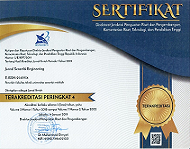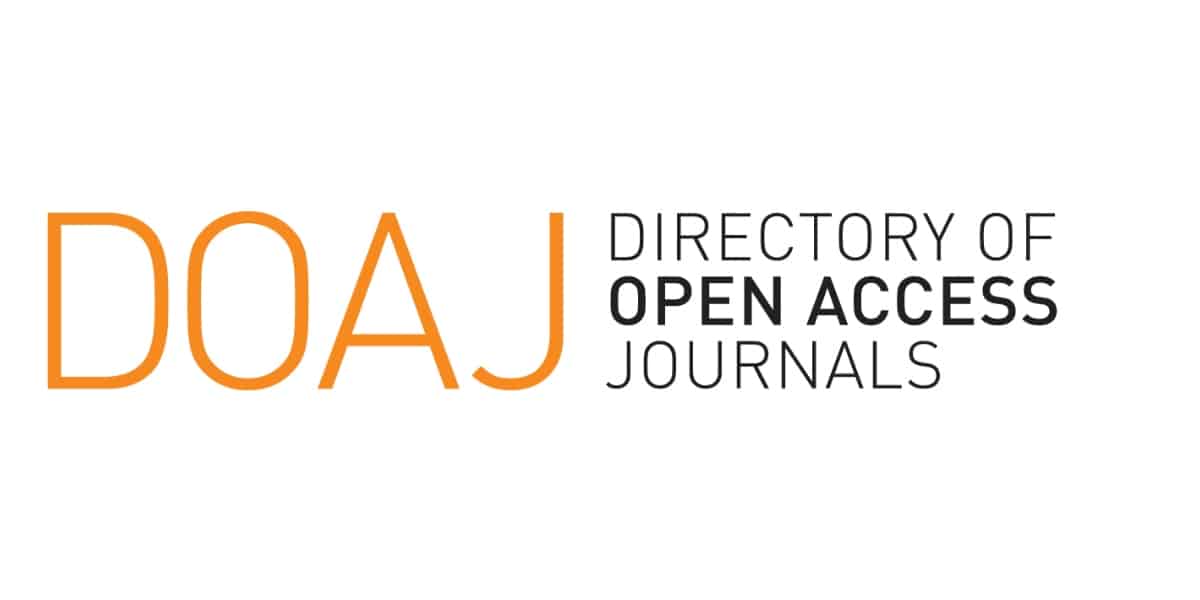Inovasi Operasional untuk Efisiensi Biaya dan Peningkatan Profit di Industri Pengolahan Limbah Plastik
Keywords:
Operational innovation, cost efficiency, profit improvement, plastic waste processing, smart technologyAbstract
This study explores operational innovation as a strategic solution for cost efficiency and profit improvement in the plastic waste processing industry. The research aims to identify effective strategies and methods for operational optimization while addressing key challenges such as high production costs, global competition, and environmental sustainability. The methodology involves a qualitative approach with case studies and literature analysis to examine the application of smart technologies, lean manufacturing, and circular economy principles. Findings highlight significant cost reductions, enhanced operational efficiency, and strengthened competitive advantage. The study contributes to the development of sustainable practices and innovation-driven growth for the plastic waste processing sector.
References
[1] F. Hanum, S. Yana, and P. Mauliza, Pemberdayaan Masyarakat Pedagang Kaki Lima dalam Meningkatkan Perekonomian. Mega Press Nusantara, 2024.
[2] R. F. Wirabuana and B. P. Prasetya, “Strategi Jitu PT. Unilever Indonesia Mengoptimalkan Operasional Di Tengah Dinamika Global,” J. Explor. Dyn. Probl., vol. 1, no. 3, pp. 143–152, 2024.
[3] S. Yana, R. Nengsih, and F. Hanum, “Keuntungan Bio-Ekonomi dan Lingkungan dari Energi Terbarukan: Tinjauan Komprehensif terhadap Praktik Terbaik,” J. Serambi Eng., vol. 9, no. 2, 2024.
[4] A. Aoun, A. Ilinca, M. Ghandour, and H. Ibrahim, “A review of Industry 4.0 characteristics and challenges, with potential improvements using blockchain technology,” Comput. Ind. Eng., vol. 162, p. 107746, 2021.
[5] W. Cai and G. Li, “The drivers of eco-innovation and its impact on performance: Evidence from China,” J. Clean. Prod., vol. 176, pp. 110–118, 2018.
[6] T. D. Moshood et al., “Green product innovation: A means towards achieving global sustainable product within biodegradable plastic industry,” J. Clean. Prod., vol. 363, p. 132506, 2022.
[7] J. Maldonado-Romo et al., “Advancing sustainable manufacturing: a case study on plastic recycling,” Prod. Manuf. Res., vol. 12, no. 1, p. 2425672, 2024.
[8] H. Dijkstra, P. van Beukering, and R. Brouwer, “Business models and sustainable plastic management: A systematic review of the literature,” J. Clean. Prod., vol. 258, p. 120967, 2020.
[9] S. E. Nurul Hidayat et al., Eksplorasi Proses Manufaktur Untuk Masa Depan Teknologi Dan Produksi. Cendikia Mulia Mandiri, 2024.
[10] A. Pratama and S. Nurfadila, “Implementasi strategi operasi manufaktur hijau menuju keberlanjutan manufaktur,” Ekon. http//ejournal. lembahdempo. ac. id/index. php/ITBis-E/article/download/253/185, 2022.
[11] Z. Arifin et al., Green Technology: Penerapan Teknologi Ramah Lingkungan Berbagai Bidang. PT. Sonpedia Publishing Indonesia, 2023.
[12] J. Lee, H.-A. Kao, and S. Yang, “Service innovation and smart analytics for industry 4.0 and big data environment,” Procedia cirp, vol. 16, pp. 3–8, 2014.
[13] A. GhaffarianHoseini, J. Tookey, A. GhaffarianHoseini, N. Naismith, and J. O. Bamidele Rotimi, “Integrating alternative technologies to improve built environment sustainability in Africa: Nexus of energy and water,” Smart Sustain. Built Environ., vol. 5, no. 3, pp. 193–211, 2016.
[14] B. Harto, P. Pramuditha, A. Dwijayanti, L. Parlina, and H. Sofyan, “Strategi Bisnis Berkelanjutan Melalui Inovasi Model Operasional Di Era Digitalisasi Bisnis,” ATRABIS J. Adm. Bisnis, vol. 9, no. 2, pp. 243–251, 2023.
[15] D. Zahra, “Penggunaan Konsep Lean untuk Meningkatkan Efisiensi Pelayanan Instalasi Farmasi Rawat Jalan di Rumah Sakit Anna Medika Bekasi,” J. Adm. Rumah Sakit, vol. 2, no. 1, pp. 29–42, 2015.
[16] N. R. Nurwulan, A. A. Taghsya, E. D. Astuti, R. A. Fitri, and S. R. K. Nisa, “Pengurangan Lead Time dengan Lean Manufacturing: Kajian Literatur Lead Time Reduction using Lean Manufacturing: A Review,” JIME (Journal Ind. Manuf. Eng., vol. 5, no. 1, pp. 30–40, 2021.
[17] N. Modig and P. Åhlström, This is lean: Resolving the efficiency paradox, vol. 41. Rheologica Stockholm, 2012.
[18] J. P. Womack and D. T. Jones, “Lean thinking—banish waste and create wealth in your corporation,” J. Oper. Res. Soc., vol. 48, no. 11, p. 1148, 1997.
[19] B. Harto et al., Wirausaha Bidang Teknologi Informasi: Peluang usaha dalam meyongsong era society 5.0. PT. Sonpedia Publishing Indonesia, 2023.
[20] A. Putriyanti, “Keterlibatan Mahasiswa Relawan Dalam Pengelolaan Sampah Berbasis Kampus (Studi Bank Sampah Universitas Syiah Kuala).” UIN Ar-Raniry, 2021.
[21] K. Conboy, P. Mikalef, D. Dennehy, and J. Krogstie, “Using business analytics to enhance dynamic capabilities in operations research: A case analysis and research agenda,” Eur. J. Oper. Res., vol. 281, no. 3, pp. 656–672, 2020.
[22] T. Davenport, Big data at work: dispelling the myths, uncovering the opportunities. Harvard Business Review Press, 2014.
[23] B. S. Blanchard, System engineering management. John Wiley & Sons, 2004.
[24] Y. Qi, B. Huo, Z. Wang, and H. Y. J. Yeung, “The impact of operations and supply chain strategies on integration and performance,” Int. J. Prod. Econ., vol. 185, pp. 162–174, 2017.
[25] K.-H. Um and S.-M. Kim, “The effects of supply chain collaboration on performance and transaction cost advantage: The moderation and nonlinear effects of governance mechanisms,” Int. J. Prod. Econ., vol. 217, pp. 97–111, 2019.
[26] M. Christopher, Logistics and supply chain management. Pearson Uk, 2022.
[27] D. M. Lambert and M. C. Cooper, “Issues in supply chain management,” Ind. Mark. Manag., vol. 29, no. 1, pp. 65–83, 2000.
[28] R. Geyer, J. R. Jambeck, and K. L. Law, “Production, use, and fate of all plastics ever made,” Sci. Adv., vol. 3, no. 7, p. e1700782, 2017.
[29] E. MacArthur, “Towards the circular economy,” J. Ind. Ecol., vol. 2, no. 1, pp. 23–44, 2013.
[30] H. Subhan, “Implementasi Implementasi Balanced Scorecard sebagai Alat Manajemen Strategi dalam Peningkatan Kinerja PerusahaanBalanced Scorecard Sebagai Alat Manajemen Strategi dalam Peningkatan Kinerja Perusahaan,” J. Inov. Glob., vol. 2, no. 7, pp. 696–711, 2024.
[31] Rita, Rita. "Pengaruh strategi inovasi terhadap kinerja operasional perusahaan manufaktur." Binus Business Review 1.2 (2010): 474-487.
Downloads
Published
Issue
Section
License
Copyright (c) 2024 Marlina, Sufitrayati, Saiful Amri, Nurfiani Syamsuddin (Author); Radhiana, Rian Maulana Akbar (Translator)

This work is licensed under a Creative Commons Attribution 4.0 International License.
















